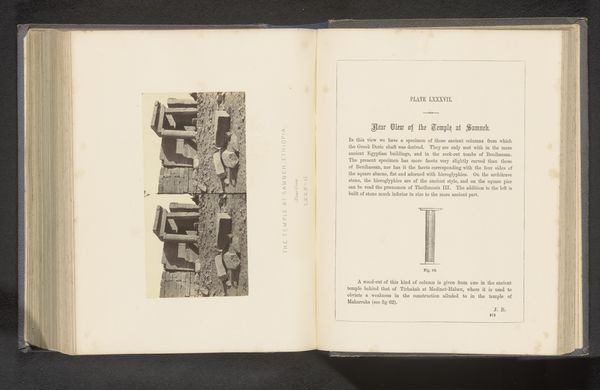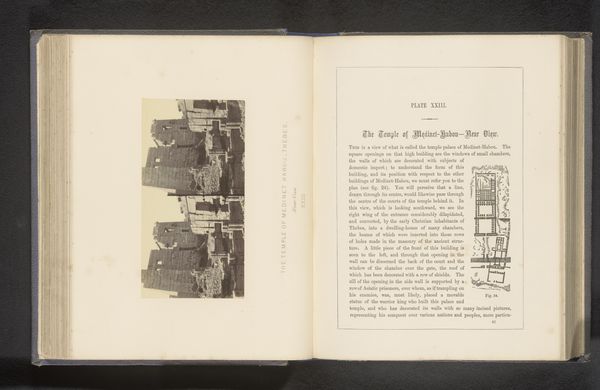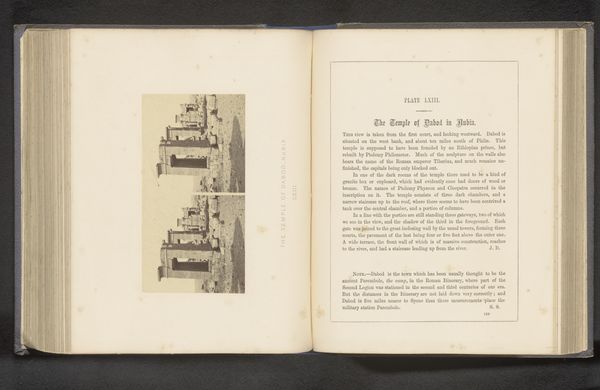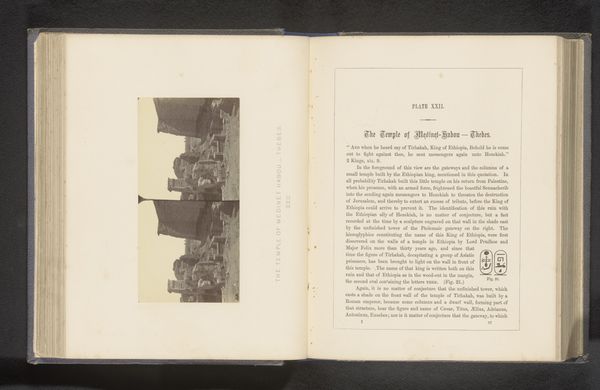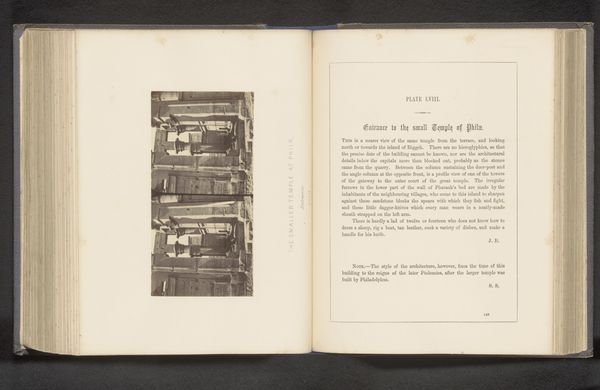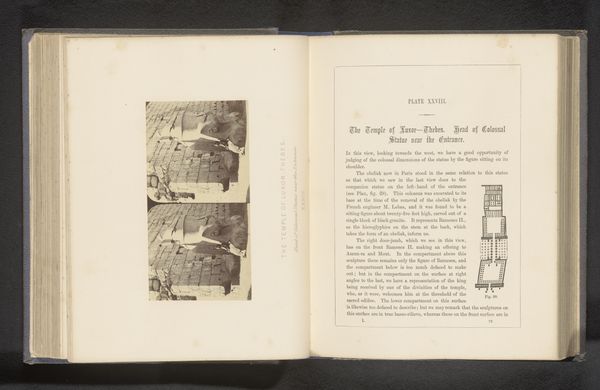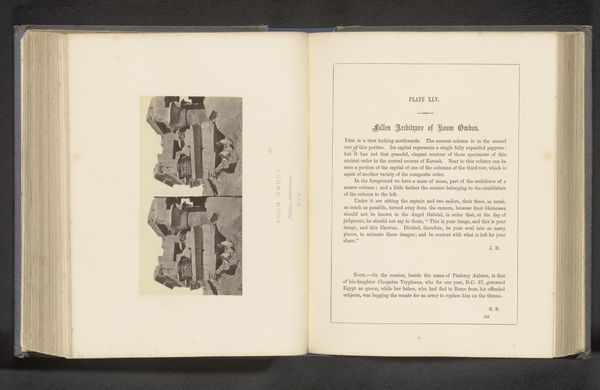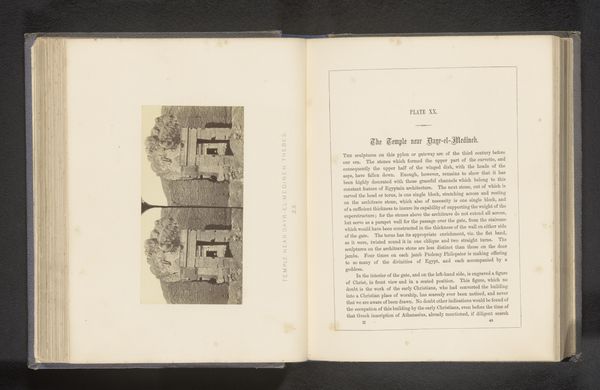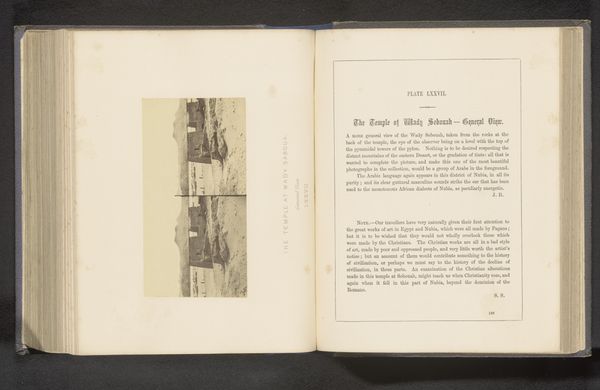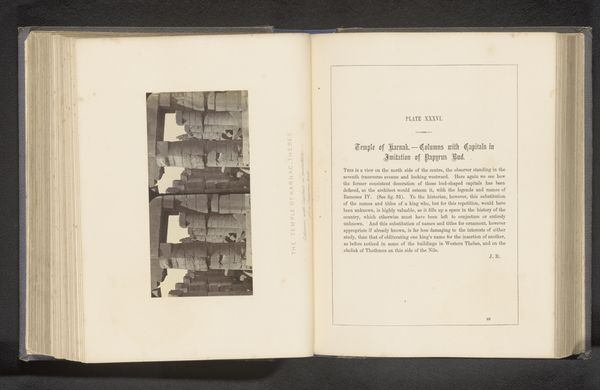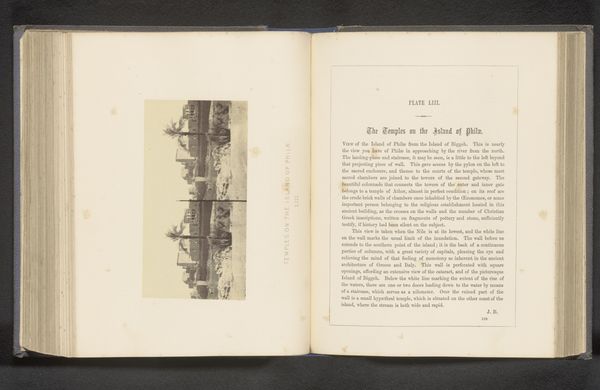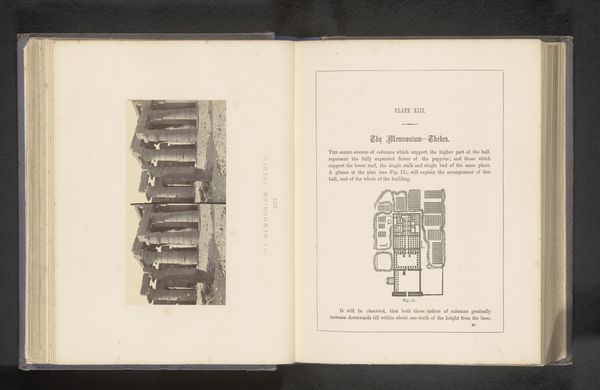
print, photography, gelatin-silver-print, architecture
# print
#
landscape
#
ancient-egyptian-art
#
photography
#
ancient-mediterranean
#
orientalism
#
gelatin-silver-print
#
architecture
Dimensions: height 74 mm, width 144 mm
Copyright: Rijks Museum: Open Domain
Curator: Looking at this photograph, "Portico van de tempel van Kom Ombo" by Francis Frith, dating from before 1862, the immediate feeling is one of immense weight and endurance. The stark contrast accentuates the crumbling details, but it also has an ethereal and solemn atmosphere to it. Editor: The photograph’s context interests me. This gelatin silver print would have required specific materials and techniques for its production. What does the colonial context in which this was made say about the power dynamics involved in representing Egyptian antiquity? It underscores the western gaze upon and consumption of other cultures' heritage through the relatively new, and quite portable, medium of photography. Curator: It’s difficult to ignore how photographs like these fuelled popular imagination. These images shaped Europe's vision of Egypt and fueled Orientalism, but this work is more concerned with documenting structures; the cultural lens is inevitable, yes, but secondary. Editor: That interpretation, however, does ignore the economics of photography in the 19th century. These photographs were commodities. Frith ran a successful commercial operation. This wasn't just a personal artistic endeavor, it was a calculated business move geared towards capturing a specific market eager to acquire images of "exotic" lands, feeding into and profiting from that particular social imaginary. How much were local communities compensated for the taking and sale of these photographs? Curator: I admit, examining that business is indeed more insightful. By concentrating on process, the labor invested in the architectural achievements is lost to the final photographic material available on the market. We look at these magnificent columns and perceive them almost solely through the photograph that has transformed their meaning. Editor: Exactly! The medium changes everything. What was intended to convey power and permanence now functions as a memento of a foreign land sold at affordable prices to those who could only dream about the so-called “Orient”. Curator: Thanks, this really changes my perspective on the value and circulation of images. Editor: Right? Seeing it not just as a photograph, but a cultural and commercial object, completely reshapes how we should view it.
Comments
No comments
Be the first to comment and join the conversation on the ultimate creative platform.
